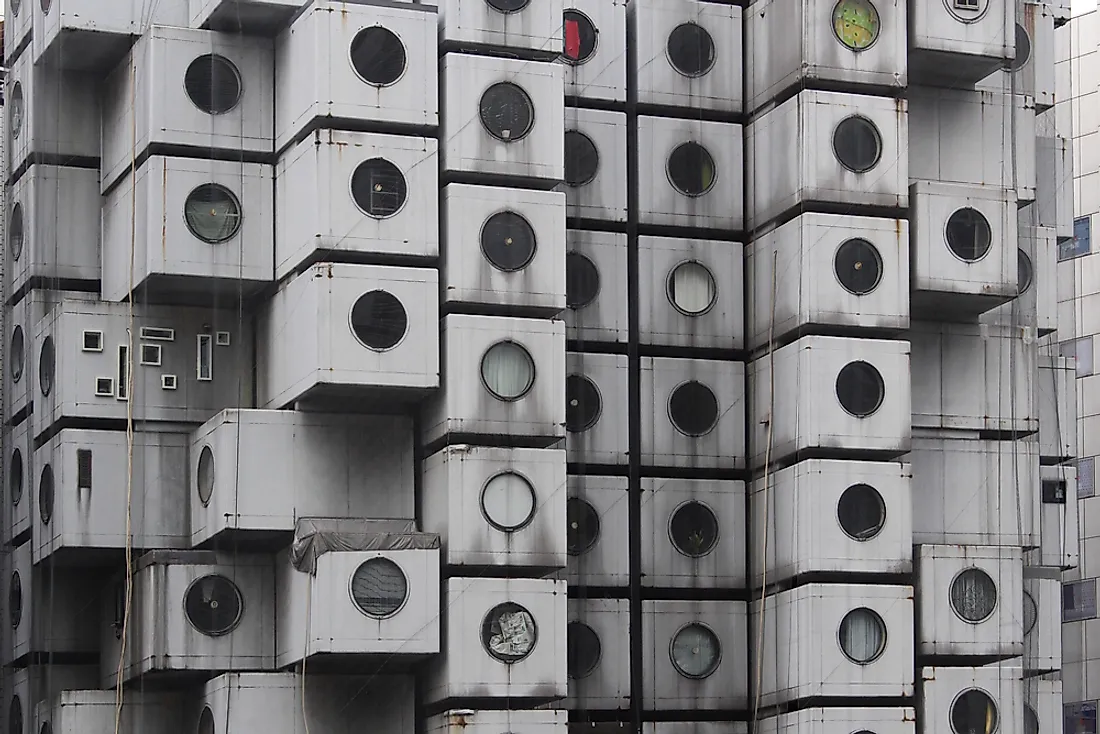What Was Japanese Metabolism Architecture?

Japanese metabolism architecture is a rare form of architecture that originated in post-WWII Japan. During the 1960s, Japanese metabolism was most influential, trending from the late 1950s to the early 1970s. The idea of metabolism was conceived by architects who had come under the influence of Kenzo Tange and other notable architects like Fumihiko Maki, Kiyonori Kikutake, and Kisho Kurokawa. The young architects were inspired by a wide array of sources including biological processes and Marxist theories. The term 'Metabolism’ was derived from a concept in biology, and saw the construction of mega architectural structures and designs for cities that shared the same abilities as living organisms such as growing, reproducing and transforming, in response to their environments. Metabolism was birthed in Japan during a time when the country was experiencing the beginning of economic growth following the devastation of WWII. During this time, people supported the idea that establishing ideal cities would be a great way to create better communities.
History
Following the 1959 disbandment of the Congrès Internationaux d'Architecture Moderne (CIAM), which was founded by Le Corbusier in 1928 together with other Europeans, metabolism architecture filled the void that was left. In what was to be CIAM's last meeting, Kenzo Tange was invited to Otterlo, Netherlands for the association's meeting. Tange presented two of architect Kiyonori Kikutake's theoretical projects exposing the fledgling metabolist movement for the first time to an international audience. During the World Design Conference held in Tokyo in 1960, a group of young Japanese architects challenged the old European ideas about static urbanism.
Growth
In 1960, renowned architect Kenzo Tange made a presentation of his theoretical plan to create a floating city in Tokyo Bay at the World Design Conference. In 1961, Kisho Kurokawa designed Helix City which was a bio-chemical-DNA metabolic solution to urbanism. During the same period, the metabolic movement was a trend catching on as architects in the US were also being widely exhibited. A good example is the City Tower design by Anne Tyng an American architect and the 300-story Vertical City designed by Australian-born architect Friedrich St. Florian.
Famous Examples
Located in Shimbashi, Tokyo, Japan, the Nakagin Capsule Tower which was designed by Kisho Kurokawa is among the best examples of metabolism. The structure features about 140 units of prefabricated cell-capsules that are bolted individually onto a single concrete shaft. However, the structure more closely resembles stacks of front-loading washing machines. Currently, the structure still exists although about only 30 units remain in use while the rest have long been abandoned. Other examples include the Yamanashi Press and Broadcaster Centre, Shizuoka Press and Broadcasting Terrace, and Hillside Terrace. There are many futuristic metabolism designs that never were constructed.
Evolution and Demise
Rumor has it that some of the work at the Kenzo Tange Lab was largely influenced by Louis Khan, an American architecture. It is believed that Khan, together with his associates, designed stacked modular towers between 1957 and 1961 at the University of Pennsylvania for the Richards Medical Research Lab. Since then, the modern geometric idea of using space became a model. Metabolism was itself interconnected and organic and unfortunately, the International Exposition held in Osaka, Japan in 1970 was the last attempt made by architects of the metabolist movement resulting to the demise of the Metabolist Movement. Post-1970, individual architects from the metabolist movement, opted to pursue independent careers and became more self-driven.











